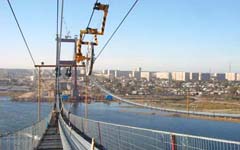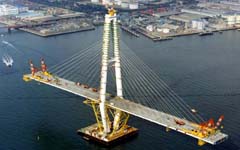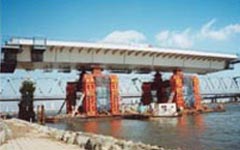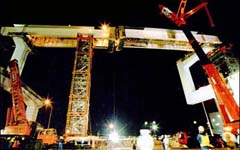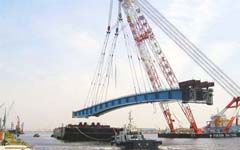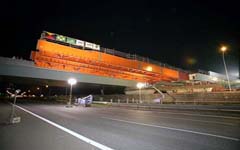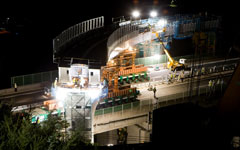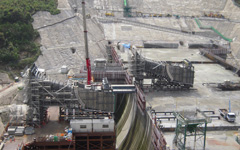Balancing erection method
STEP1: Erection of the bottom part of the tower
A large block is mounted on a barge. The barge is equipped with lashing, so that it can resist the high tide.

STEP2: Setting of diagonal bent
Girders on barges are lifted up by the cranes mounted on the deck. Floating cranes may sometimes be used.


STEP3: Erection of the upper part of the tower
After mounting the first part of the main girder on the diagonal bent, the tower erection will be completed. For the erection of the tower, a climbing crane is used.

STEP4: Cantilever erection of main girder
Girders on barges are lifted up by the cranes mounted on the deck. Floating cranes may sometimes be used.




STEP5: Cable Erection
Cables are connected to the girder one by one, using cranes on the girder, and center-hole jacks.



STEP6: Closure of side span
A large block of the girder is lifted and connected with the side span girder, which is already erected to the maximum extent possible. When the connection of the large block is completed, the side span will be fully closed.


STEP7: Removal of diagonal bent
During the erection of the girders, the girders were supported from the bottom only by the diagonal bent, apart from the main cable from the upper side. After the completion of the side span, the diagonal bent will be removed. This is taken down by two floating cranes and placed on the barges. This operation requires subtle adjustment and sensitivity.



STEP8: Closure of center span / completion
Erection of the bridge is completed upon closure of the center span.




